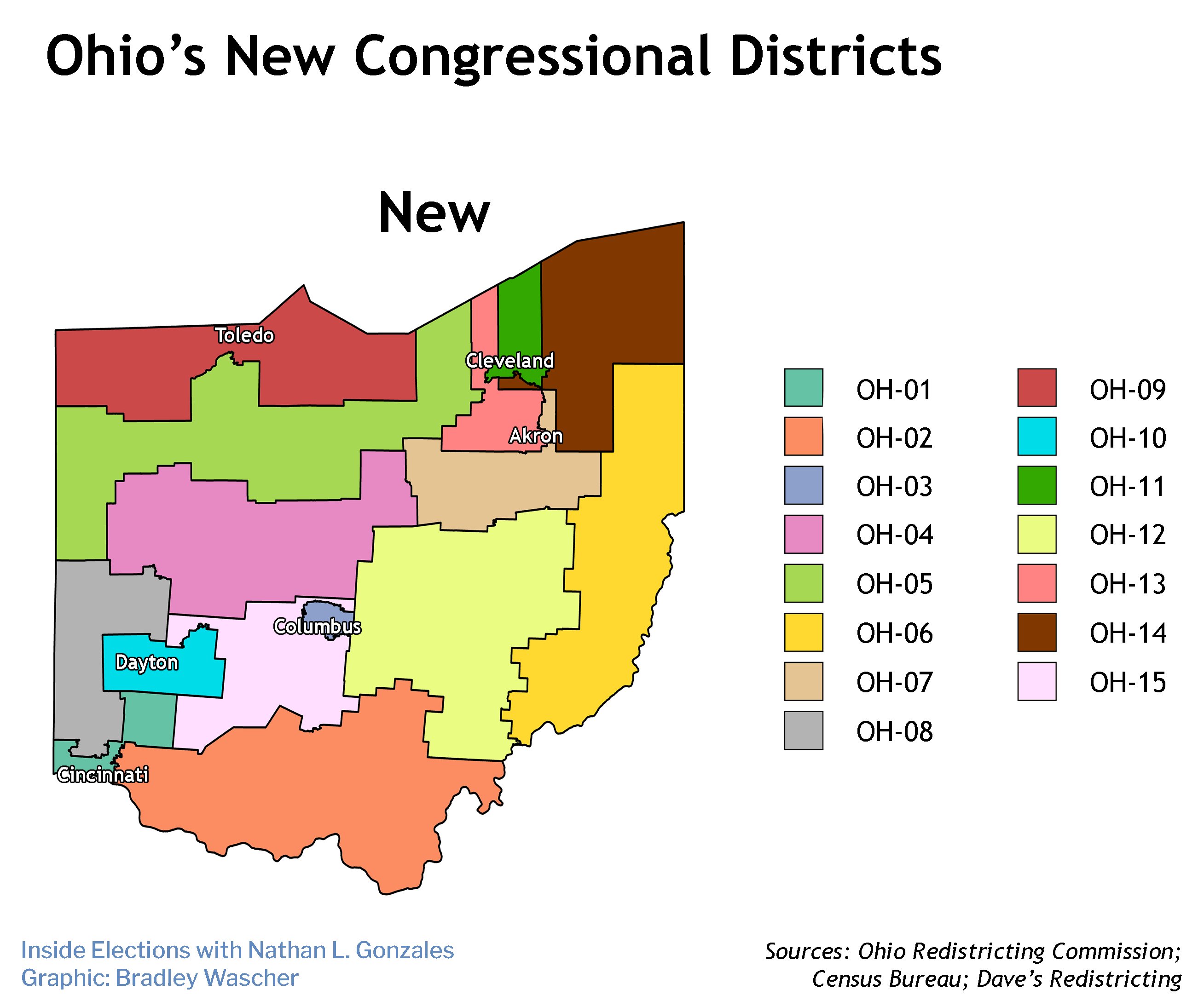A new process led to the same old result as Republicans maximized their control of redistricting in Ohio.
In 2018, Ohio voters approved a ballot initiative that overhauled the state’s redistricting process with the ostensible goal of producing fairer congressional and state legislative maps. The new scheme incentivized cooperation between the parties by requiring bipartisan majorities to pass a map through the state legislature. And if the state legislature failed to come up with a compromise, responsibility would fall to a backup commission of officeholders that also had to marshall a bipartisan majority to approve a map.
The new law also provided a backup to the backup. If the commission deadlocked, then the state legislature could step in again and pass a map with a simple majority, with a catch: such a map would only be good for four years, rather than the usual decade.

And that’s exactly what happened. After making superficial at best efforts to pass a map with bipartisan support in the legislature and the backup commission, Republicans passed a congressional map with no Democratic votes. Under the new lines, the GOP could win up to 13 of the state’s 15 districts (they currently hold 12 of 16, but Ohio lost one district due to reapportionment) despite Democrats regularly winning 45 percent or more of the vote in statewide races.
After 2024, the whole redistricting process will start again. If Republicans continue to control the state legislature and all of Ohio’s constitutional offices, they will once again be able to draw maps with no Democratic support, likely adjusting for any political shifts that take place over the next four years.
The map is facing several legal challenges. In federal court, several Black Ohioans have argued...

